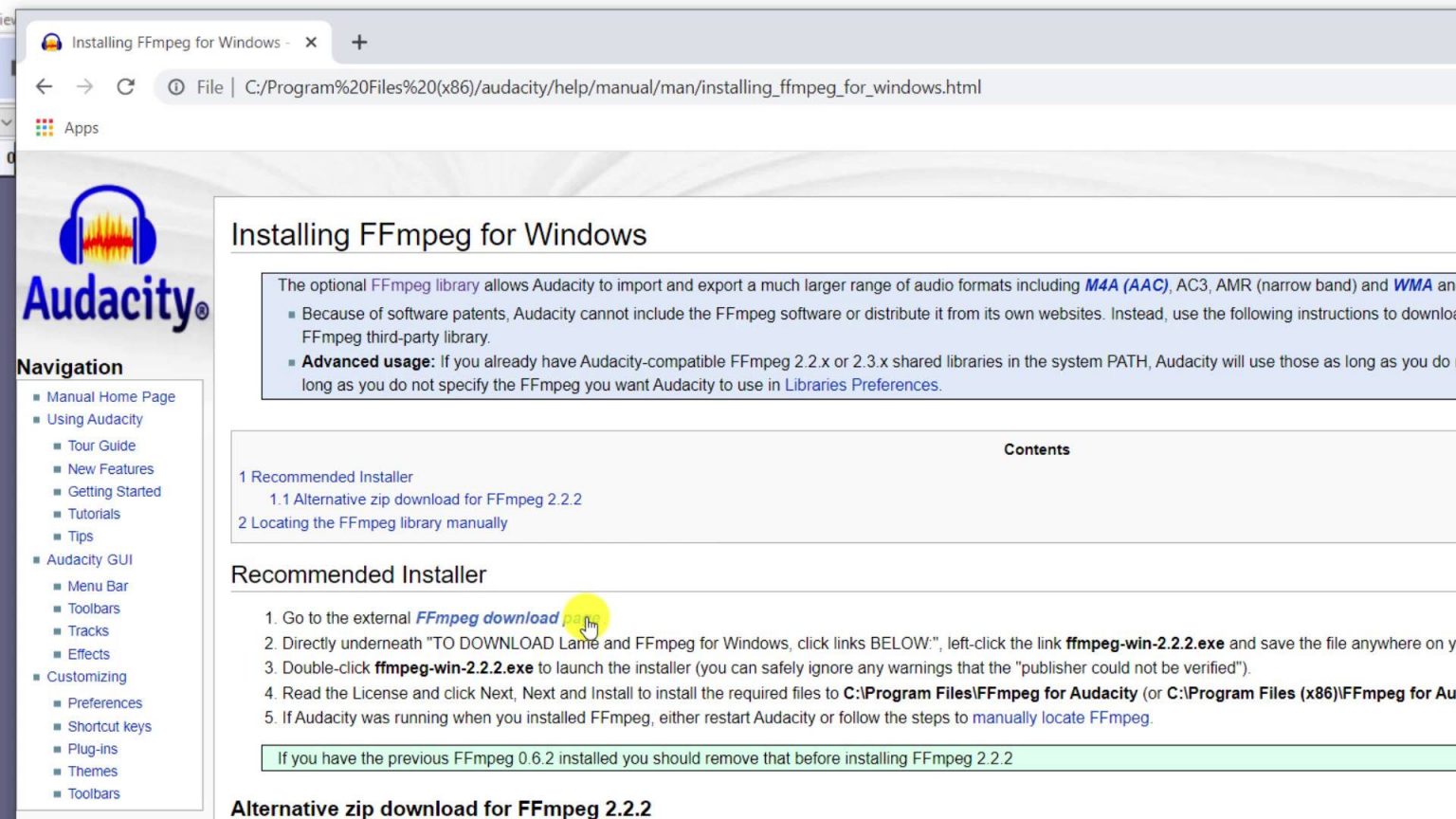

- FFMPEG MAC AUDACITY FOR MAC
- FFMPEG MAC AUDACITY INSTALL
Change the pitch without altering the tempo, or vice-versa.Add different effects like echo, phaser, wahwah, reverse, and more.Large files can be edited fairly quickly.Edit your audio files by cutting, copying, pasting, and mixing them.Import MPEG audio (including MP2 and MP3 files).Supports various file formats like WAV, AIFF, AU, and Ogg Vorbis.
FFMPEG MAC AUDACITY INSTALL
Download, Install or Update Audacity for Mac! It comes with many useful features, some of which are: Audacity for macOS also has a built-in amplitude-envelope editor, a customizable spectrogram mode, and a frequency-analysis window for audio-analysis applications. Edit your sounds using cut, copy, and paste features (with unlimited undo functionality), mix tracks, or apply effects to your recordings. The appcan record and play sounds and import and export WAV, AIFF, MP3, and OGG files.
FFMPEG MAC AUDACITY FOR MAC
If you delete the Audacity folder from a previous installation, remember to move any optional plug-ins you added to its plug-ins folder to the new Audacity Plug-Ins folder at ~/Library/Application Support/audacity/Plug-Ins.Īudacity for Mac 2020 full offline installer setup for MacĪudacity for Mac is an open source, cross-platform audio editor and recorder. Alternatively you can remove all unwanted duplicates, whether you have deleted the old Audacity installation folder or not, by deleting the file pluginregistry.cfg in ~/Library/Application Support/audacity/. This does not remove the duplicates from the Plug-in Manager's list, but disables them so they do not appear in the menus. You can remove any duplicates that don't run by using Effect > Add / Remove Plug-ins. Duplicates of other previously shipped plug-ins might appear even if they no longer exist, in which case they will fail to run. Because Audacity's shipped plug-ins are now bundled inside the application, any still extant Nyquist plug-ins that came with previous Audacity will appear as a second copy of the plug-in in the Generate, Effect or Analyze Menu. Versions of Audacity before 2.1.3 were usually installed inside a folder named 'Audacity' which was in the 'Applications' folder. Because of software patents, Audacity cannot include the FFmpeg software or distribute it from its own websites. 
If you had a previous installation of Audacity 2.1.2 or earlier, its shipped plug-ins were in the 'plug-ins' folder where Audacity was installed. The optional FFmpeg libraryallows Audacity to import and export a much larger range of audio formats including M4A (AAC), AC3, AMR (narrow band) and WMAand also to import audio from most video files.






 0 kommentar(er)
0 kommentar(er)
